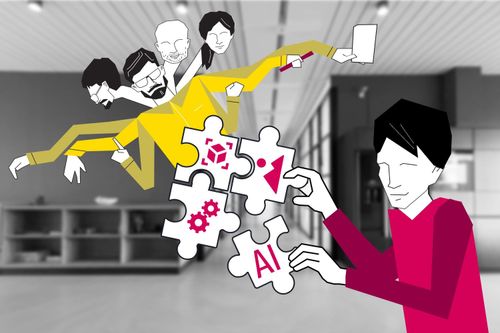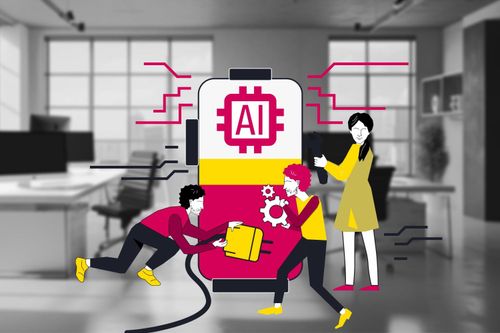
Keeping software development costs within the budget and not compromising the quality, that's always the trick. The balance is crucial, not only to stay competitive but also to meet the high expectations of clients and end-users.
As a CTO who's been managing dev teams, for other companies, I found that maintaining this balance doesn't require cutting corners. You just have to be smart about how you plan, what you build, and who's building it.
Studies show that outsourcing can cut development expenses by up to 70%, depending on the project's scope and location of the outsourcing partner.
How to keep development efficient without sacrificing quality:
1. Strategic Planning - Cost-Centric Prioritization
Cost estimation or management is what each customer needs before starting a project.
At, Smartexe, we avoid wasting resources on low-impact features by focusing on what's important. This way we can stay within a budget without sacrificing quality.
Here are some practical examples of reducing costs due to planning:
- Sprint Planning: realistic estimations and prioritized tasks directly impact outcomes.
- Agile Methodologies: minimizing the divergence from user needs and expectations. We iterate quickly and kill features that don't matter.
2. Automation and AI as Cost-Efficiency Drivers
At Smartexe, we see automation as an efficiency tool. Developers test and implement AI, automation tools across all stages of development. If something actually works — such as auto testing or AI-assisted code — we leave it in the stack.
I also guide them to write down their experiences and rate these tools by various efficiency-related parameters. I find that developers enjoy this experimentation and it helps them feel more involved with their projects.
Yes, many new AI tools aren’t super useful, or irrelevant due to security and privacy concerns, but some are simply amazing. They help to reduce human error, speed up development cycles, and ultimately lower costs by freeing up our developers to focus on more complex, value-added tasks. Companies that have gone beyond the initial testing phase of intelligent automation report an average cost savings of 32%
3. Leveraging Open Source for High Impact, Low Cost
Open-source software can be amazing — if you make the right call. At Smartexe, we always testing open-source tools that are compatible with our existing systems.
We always seek out things with great community support, good documentation, and regular updates. We also try to contribute to these communities. It saves us money on licensing fees and enables us to move fast without having to reinvent the wheel.
An example of cooperation is the Smartexe team with Google’s WebRTC open-source project for real-time communication. We just love the Google team involved in this project and the ease of collaboration.
Such projects enhance our reputation and attract top talent interested in engaging with the latest technology.
4. Streamlining Operations with CI/CD
CI/CD enables us to ship faster and discover bugs earlier. We automate pipelines to test every code push. That way, we don't get nasty surprises two weeks from launch.
Furthermore, the accelerated deployment cycle allows us to deliver updates more frequently and enhance product quality and customer satisfaction. This approach streamlines our processes, reduces downtime, and avoids last-minute craziness for all.
A survey found that companies achieved a 30% reduction in time-to-market and a 25% increase in test coverage using test automation.
5. Smart Outsourcing of Non-Core Development
Outsourcing is about getting the right people for the job. Offshore talent and outstaffing can reduce hiring costs and increase productivity at the same time.
Our customers usually outsource non-core functionality — like mobile apps, customer platforms, or integrations. This frees up our in-house teams to focus on their priorities and key expertise.
6. Continuous Learning as a Tool for Cost-Efficient Delivery
Investing in your team's continuous growth is great for cost efficiency. We already talked about AI and automation tools, but these are only the tip of the iceberg.
Ongoing education through code reviews and easy access to courses and certifications.
The more experienced the team, the more efficient it is. Also, it improves the capacity to tackle complex problems smarter.
Plan Smarter, Execute Leaner
Reducing software development costs isn't a matter of trimming fat. It's a matter of being smart with your time, tools, and team:
- Prioritize what matters
- Automate where possible
- Take advantage of tried-and-tested tools (open-source saves)
- Outsource wisely
- Level up your team
Like this article? Follow me and Smartexe for more original content and insights on enhancing team performance and productivity.



















